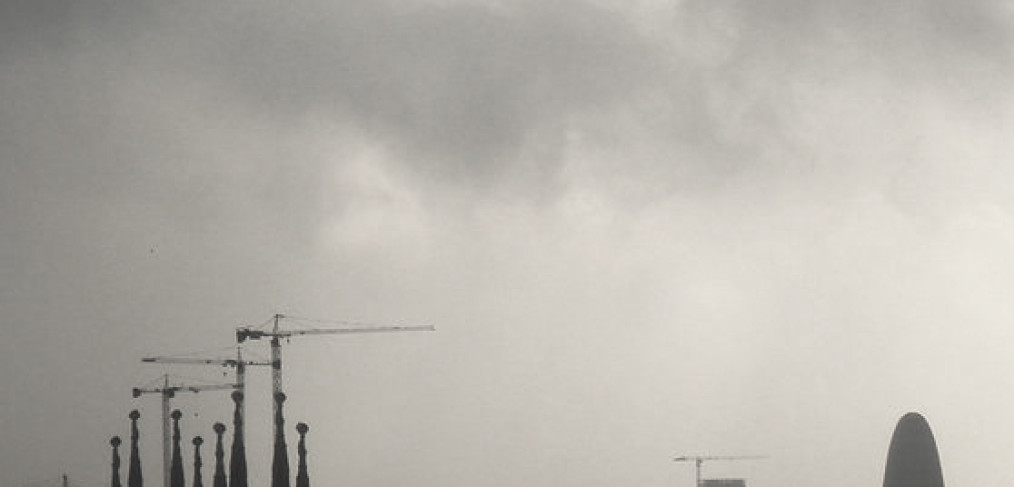
Gaudí’s Rhetoric
Author: Kristian Rasmus Bjerre
Barcelona, as the major european city it is, has some fine spaces and places embedded in its fabric. The notion of Barcelona as the capital of Catalunya can in many ways express this; through a unique flag, a distinct language, and, architecturally speaking, a unique expression. In this short discussion I would like to talk about architecture as a language, as a form of communication, and more specifically the language of Antoni Gaudi.
Architecture can in many ways be seen as a language with a specific syntax – from the classical orders, shaped by the golden section, to the humble white washed buildings of contemporary japanese architecture. It is a communication of ideals, as modernism was in many ways, and this is particularly apparent in classical architecture. At the end of the 19th century the neoclassical wave had washed over europe for more than a century and it is in this break the starchitect of Barcelona, Antoni Gaudi, excelled.
The architects of the time were blessed with new construction methods, which gave birth to new building techniques, expressed clearly in the Crystal Palace in London (1851). Using new technologies in this way creates a new form of iconographic qualities, through technology, and thus push the boundaries of architectural interventions. Gaudi, however, did only partly embrace these new construction methods, but he did nevertheless push the boundaries of architecture, and nearly exclusively in Barcelona.

The Crystal Palace in London
I will not dwell on the architectural quality of his buildings, as architecture is highly subjective, but in reverting to the notion of architecture as a language, Gaudi had an appeal through his architecture. His buildings can be seen as groundbreaking, or unique, at first glance, but at a closer look they also embody blatant symbolism and traditional building techniques which makes them fit snugly with Charles Jencks notion of a ‘comprehensive icon’ – readily accessible symbolism mixed with ambiguity and new building techniques.
Architectural language, as with all other languages, embody rhetoric in one way or another. Although rhetoric implies some sort of dynamism, the relationship to architecture is more static than dynamic in this sense. Thus, the rhetoric in architecture, as I see it, clearly embody the three central parts of rhetoric (called the three musketeers of rhetoric by Sam Leith); ethos, logos, and pathos.
Throughout the work of Gaudi, the genius of his work becomes more apparent through time. Lets explore what I mean by rhetoric:
- Ethos, the appeal of character. Not strictly apparent in his early work, but later, as he became more renowned, his freedom increased and he could more or less do what he wanted. This can be clearly seen in his buildings Casa Battló, Casa Milà, and in the Church of Colonia Güell (how do these angled pillars work!?)

Colonia Güell

Slanted columns in Parc Güell
- Logos, sounding reasonable. As I mentioned earlier, the traditional building techniques and materials are clearly present in his work, both through the use of catalan tiling in Parc Güell and Casa Battló, and the use of the Catalan ribbed vault ceiling. Possibly a reason why one of his early works, the Palau Güell is more humble than his later projects – in a sense more traditional.

The Columns in Colonia Güell

The facade of Palau Güell
- Pathos, the appeal to emotion. The emotion he appealed to in his work has, in my opinion several branches. Firstly his work embodies a particular style or art nouveau, which has become iconic of Barcelona, and thus to regionalism (and possibly to some degree Catalan nationalism?). Secondly, he uses religious symbolism through some of his work (think of the lance of st. George, the patron saint of Barcelona, on the roof of Casa Battló). Thirdly, his logos, or appeal to reason, has local ties to Barcelona through its traditional, but reinterpreted, use of materials – through broken tiles and the ribbed roof.

Casa Milà in Barcelona

Roof detail of Casa Milà
Exploring architecture under the terms of rhetoric, I would like to introduce the notion of appeal, in this globalised age: what is the most important appeal to you; ethos, logos, or pathos? As Gaudis work was almost exclusively located in Barcelona, he had natural ties with the place. But, as a student, when designing globally, one has to communicate to many unknown dynamics. Thus, the question remains; what will you communicate to who?




